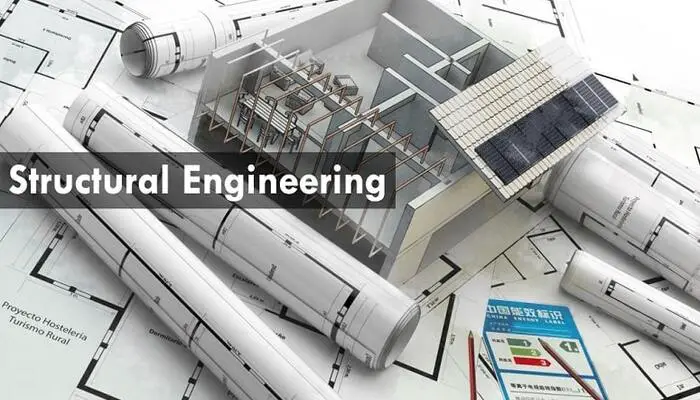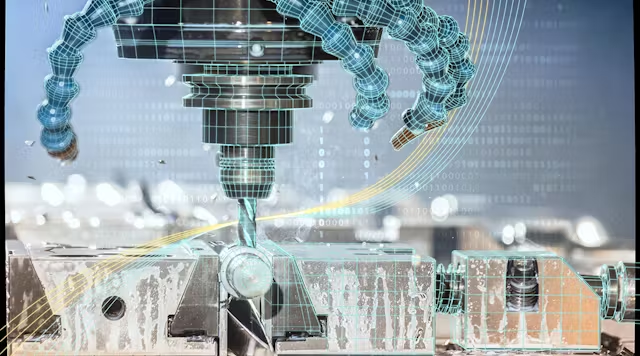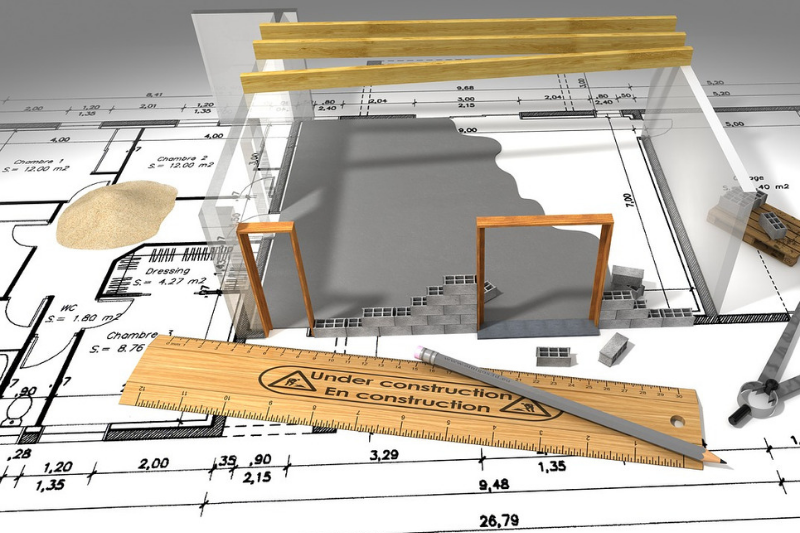Discover the Top 6 Structural Engineering Trends in 2025

Table of Contents
Ever wondered who decides the load and pressure a structure can withhold? Who ensures that structures are strong and stable enough to bear loads and withstand earthquakes, wind, and other natural disasters? Well, thank structural engineers for that!
A subset of civil engineering, structural engineering involves the applications of the laws of mathematics, physics, and empirical knowledge to design safe structures. It helps determine the maximum load capacity of a structure and the different materials that can be used to build it. Structural engineers calculate the strength and stability of a structure to ensure it is safe and won’t collapse under applied loads during its serving time.
Interested to know more about it? Read the blog to know the scope of structural engineering and new trends in structural engineering.
What is Structural Engineering
Structural engineering focuses on the design and analysis of structures like buildings, bridges, and dams. Engineers need to comprehend the stability, strength, and rigidity of the buildings, subject to factors like susceptibility to earthquakes and loading capacity. Structural engineering is commonly called designing the ‘bones and muscles of a structure’ as its primary goal is to ensure the structures are safe, stable, and can withstand intended loads and environmental conditions.
Structural engineers work with architects and other professionals charged with planning, designing, and constructing the project. They can also be involved in designing other assets of the project such as machinery that impact structural integrity. While designing, they consider factors like the shape and configurations of the structure, the material used for construction, and the loads the structure may experience during its lifetime.
Role of Structural Engineers in the Construction Industry

Structural engineers play a pivotal role in the construction industry, using their expertise to design structures that are safe throughout their intended lifespan. They significantly contribute to the successful and safe completion of the projects worldwide. Take a look at their diverse responsibilities:
1. Analysis
A structural engineer analyses the forces and loads that the structure will encounter during its lifetime. These forces can be gravity, wind, earthquake, and live loads. Based on the analysis, they design the structure with specified dimensions. They also mention the materials that will be best suited for the intended loads.
2. Material Selection
Based on the material properties and the project requirements, several types of materials are used in construction, such as steel, wood, concrete, and composites. As per the analysis, a structural engineer chooses the materials that best meet all the requirements of a project. Notably, he also considers other factors like cost, strength, durability, and environmental impact of the materials.
3. Design
A structural engineer works on innovative design solutions to optimise the material use, enhance structural performance, and improve sustainability. He incorporates new technologies like Building Information Modelling (BIM) to create more environmentally friendly and efficient designs.
4. Compliance and Regulations
All structures designed and built must comply with local building codes and safety standards. A structural engineer must stay updated on building codes and ensure that the construction plan adheres to the regulations and guidelines.
5. Collaboration
A structural engineer collaborates with project planners, architects, project managers, construction managers, and other stakeholders involved in the construction process. He communicates his design requirements and works with others to address challenges, throughout the project design and execution processes.
6. Quality Control
Monitoring the materials’ quality and workmanship is equally crucial to ensure the strength and stability of a project. A structural engineer ensures the project is constructed as per the design specifications. He conducts site inspections, reviews construction documents, and addresses structural integrity issues that may arise during the construction process.
7. Risk Management and Mitigation
Natural disasters like earthquakes and floods are potential risks to the structural integrity of a building. A structural engineer develops strategies to enhance the building’s resilience against these natural disasters.
8. Project Management
A structural engineer is also responsible for managing the project and overseeing the construction process. In short, his responsibilities don’t end just with structural designing but span throughout the construction phase. He coordinates activities, manages budgets, and ensures smooth project completion.
Read more: BIM Adoption in the Civil Engineering - Overview, Benefits & Factors Affecting
Demand for Structural Engineers and Salary
As per reports, the Indian construction industry is expected to reach USD 1.4 trillion by 2025, showing the growing demand and scope of structural engineering in India. Rapid urbanisation and infrastructural development are quintessential for any country, which further points out the demand for structural engineers and their skills to design and build new structures, as well as assess the already built environment. Besides, the Indian government has launched several initiatives that will have a direct impact on the need for structural engineer jobs in India.
Demand for Structural Engineers
Read below to get answers to your question - is there a demand for structural engineering in the future:
- Urbanisation and Infrastructure Development: There will be a constant demand for structural engineers in the market, as urban areas expand and infrastructure will continue to age. There will be a need to build new buildings, roads, bridges, and other structures as well as rebuild the existing ones.
- Technological Advancements: Advancements in methods, materials, and technologies require specialised knowledge, increasing demand for structural engineers with up-to-date skills and knowledge about the latest trends in structural engineering.
- Sustainability and Environmental Concerns: The industry is witnessing a growing trend for sustainable design and eco-friendly construction. So, the industry is witnessing a growing demand for structural engineers with expertise in green building practices.
Salary of Structural Engineers
The annual structural engineer's salary in India ranges between INR 5 lakhs and INR 10 lakhs, with an average salary of INR 6 lakhs. Several factors that affect the salaries include:
- Education: A bachelor’s degree in structural or civil engineering is the minimum requirement to be a structural engineer. However, advanced courses and degrees like a BIM course or master’s in civil engineering can help get better salary packages.
- Experience: An experienced structural engineer typically gets a higher salary package compared to entry-level engineers. An additional certification course in civil engineering or specialised skills further enhances earning potential.
- Industry and Location: A structural engineer’s salary varies from one industry to another, from consulting firms and government organisations to construction companies. The location of the job and company also impact a civil engineer’s salary.
Read more : Use of BIM Processes in Construction Phases
Top 6 Structural Engineering Trends
Driven by technological advancements and innovative ideas, the structural engineering field is constantly evolving. Several trends in structural engineering are revolutionising the industry, reforming how technology is utilised to deliver better and sustainable projects. Take a look at the current trends in structural engineering:
#Trend No. 1: Building Information Modelling (BIM)
.png?width=696&height=396&name=Uses%20of%20Building%20Information%20Modelling%20(BIM).png)
One of the top trends in structural engineering, BIM is a powerful tool that is being widely used across the industry for collaboration, prefabrication, and sustainability. It helps represent a building’s characteristics digitally and aids in well-informed decision-making throughout the project’s lifecycle. However, its utilisation extends beyond the visual representation of the projects and also helps in efficient collaboration among the stakeholders, cost management, and project management.
- Project Management: BIM is revolutionising the construction industry by serving as a platform to virtually produce designs and manage projects throughout their life cycle.
- Collaboration: BIM helps generate multiple layers of metadata and integrate them into a collaborative workflow.
Modern Approach: BIM is a comprehensive approach that captures information that traditional methods can’t. It assists in the designing, construction, and management of projects in a collaborative nature, ensuring their timely completion cost-effectively.
#Trend No. 2: Prefabrication and Onsite Fabrication

The global prefabrication market surpassed USD 147 billion in 2022 and is expected to grow at a 6.5% CAGR from 2023 to 2032. Prefabrication is a concept that involves manufacturing building components in a factory, assembling them, and transporting them to the site for the congregation. Modular construction is a further step to this concept where the entire building modules or sections are constructed in a factory and joined together on the site to form the final structure.
Prefabrication is an innovative approach that helps improve project efficiency, reduce waste and construction time, and better project management. It also helps make projects cost-effective and sustainable.
- Increased Infrastructural Demand: The increasing demand for new homes is one of the major growth drivers propelling the growing adoption of modular construction.
- Easy Option: A prefabricated construction is a suitable choice for rooftop dwellings, study spaces, garden houses, and commercial kiosks.
Read more : BIM for Designing and Construction of Railway Infrastructure: A Comprehensive Guide
#Trend No. 3: New Construction Materials

The growing awareness of the construction's impact on the environment and nature has led to advancements in construction materials. Several novel materials like self-healing concrete are revolutionising the construction industry, aiding in constructing structures that are durable as well as environmentally sustainable. These new construction materials are transforming the industry by reducing construction waste, improving energy efficiency, and minimising environmental impact.
- Increased Shelf-life: The self-healing concrete is the future of the construction industry. The cement self-repairs the cracks autonomously, increasing the shelf-life of the concrete structures.
- Decreased Footprint: To mitigate the construction industry’s carbon footprint, CO2 is being repurposed in several innovative ways.
#Trend No. 4: Artificial Intelligence (AI)

As Artificial Intelligence (AI) is advancing, engineers are finding new ways to leverage to tackle challenges, streamline processes, and unlock innovation to increase efficiency. The following are some trends that will become trends in the future:
- Generative Design Revolution: Using AI-driven algorithms, engineers are actively generating multiple design options based on specified parameters and constraints. This will accelerate the design process by producing innovative solutions that weren’t explored through traditional methods.
- AI-Enhanced Simulation and Analysis: AI is making simulations smoother and smarter leading to quicker and more accurate outcomes. This is particularly helpful in structural analysis where simulations can help produce and test multiple designs.
- Collaborative Tool: AI is becoming a collaborating tool to help all stakeholders brainstorm ideas, offer design suggestions, and predict potential challenges.
#Trend No. 5: Internet of Things (IoT)
.jpg?width=700&height=400&name=Uses%20of%20Internet%20of%20Things%20(IoT).jpg)
The Internet of Things (IoT) is simply an interconnected network of appliances, devices, and vehicles that share data. In the engineering field, IoT changes the way buildings are designed, constructed, and managed.
- Smart Manufacturing: IoT is one of the biggest trends in structural engineering as it helps in smart manufacturing by integrating manufacturing equipment with sensors to gather real-time data on quality and performance.
- Connected Products: Products with embedded sensors help understand how products are used in the real world, aiding the continuous improvement and better use experience.
#Trend No. 6: Digital Twin and Simulation

In Structural Engineering, Digital Twins refer to the virtual replicas of real, physical assets that are connected and tracked using real time data. In the case of all major Digital Twins, BIM serves as the foundation or building block of the project in managing its life cycle.
These trends include:
Operational Insight - As the term suggests, BIM based digital twins help monitor building performance, telling about needs of repair and replacement. Thus increasing the overall life of the building.
Smart Buildings - Sustainability of the building can be improved through IoT sensors that help track real time data.
Facility Management - BIM based digital twins help in tracking assets, scheduling maintenance and keep the building up to date.
In all, BIM powered Digital Twins make decision making smarter and efficient.
Read more: A Closer Look at the Scope of BIM in Civil Engineering
How to Keep up with Trends in Structural Engineering
Staying up-to-date on recent trends in structural engineering is essential for professionals in the AEC industry, helping them remain competitive in the market. Several ways to stay on top of the prevailing trends in structural engineering are:
- Attend industry conferences and events
- Enrol for webinars and online courses
- Subscribe to industry publications and join professional associations
- Participate in online communities and forums
- Follow BIM software providers to remain informed about advances in civil engineering software
- Explore BIM-related blogs and podcasts and read research papers, whitepapers, and case studies
- Network with peers and colleagues in the AEC industry
Popular BIM Civil Engineering Software for Structural Engineers
There are several BIM software packages available in the market and each has its own strengths and weaknesses. Tap here to know about them in detail.
Conclusion
The future of structural engineering is an intersection of technological advancements that can reshape the industry. All the trends discussed above are at the forefront of this reformation, each offering a unique capability to help engineers design, create, and construct innovatively. As we move forward, staying updated with these trends is crucial for structural engineers to remain competitive in the ever-evolving engineering landscape. One of the best ways of being updated with structural engineering technology is by enrolling on structural engineering courses.
If you are looking for career advancement, enrol for the BIM course for civil engineers offered by Novatr and learn 10+ BIM software.
Head toward our Resourse page to learn more about BIM and the latest industry trends.

 Thanks for connecting!
Thanks for connecting!





.png)


.jpg)


